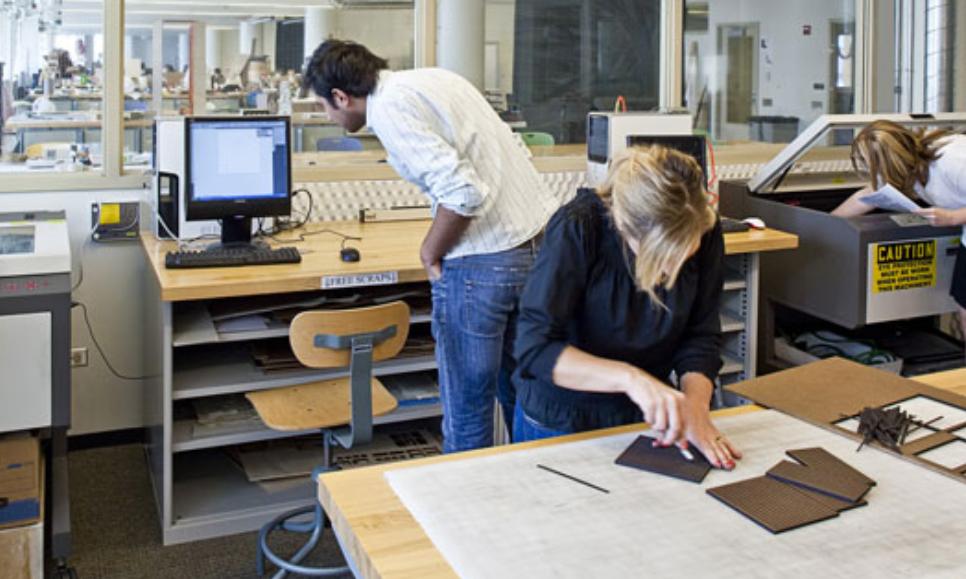architecture college evaluationEvery future architect at some point in their career development must evaluate various architectural colleges as prospective launching points for their architectural education.
Where to start ?? I'm going to leave the limitations of tuition and costs related to housing and such to your generous benefactor(s) and look at the institutions themselves. While I'm not going to make any recommendations for specific institutions, I will give you some resources and questions to pose in reviewing their programs. So let’s assume for the moment that your intent is to get registered as a professional architect with the intent to practice as such. The first recommendation – Visit their college website! Hopefully many of the questions here will be answered there. U.S. Architectural Programs
If you are looking for a list of schools in a specific state use the NAAB web site. Make sure you select the School Degree Program as "Bachelor of Architecture" if you are just entering college from high school. NAAB
Look for their NAAB accreditation. If it's not on their website you can check this listing. Accreditation is an essential component of any Architectural Degree program and provides a regular third party review of a program for compliance with specific criteria relative to the training of students in architecture. In addition the state you intend to practice may require a degree from an NAAB accredited institution to qualify for licensure as a registered Architect. http://www.naab.org/accreditation/ Get on Linkedin
This is a professional networking site and you can run in-depth searches for graduates of a specific university. You will need to create a profile first.
Labs & Fabrication Facilities
Can take many forms and offer varying ways to explore the architectural environment the student is designing.
+ Augmented Reality
+ 3D Printer + Laser Cutters ................................................................. The Comparison While architectural model building will vary from non-existent to being a essential part of the architectural office work flow, in the academic environment it is an excellent way to study a design form. |
Interview Questions
Correspond with the College of Architecture under Consideration. The following questions will identify what influence the professional practice has on the academic curriculum. 1. How many of their tenured professors are registered architects? Commentary: Look for a substantial percentage to be or have been registered architects. 2. Identify the number of years each tenured professor was active in the professional practice. Commentary: The more registered architects, with active years of practice, the higher the likelihood that the program will be influenced by the practice of architecture and less by a purely academic approach. 3. How many of your adjunct / visiting professors are actively practicing architects. Commentary: Given the time requirements of being a practicing architect it is likely that these professors will be adjunct or visiting (part-time) staff with limited teaching roles. a. What classes do they teach? i. Design Studio – This will increase the possibility that years of practical experience will be brought to the design process that addresses: 1. Cost / Budget, 2. Buildability, 3. Proper Selection of Building Materials, 4. Functional / Spatial relationships based on acutal client needs, 5. Life safety Requirements for Exiting and Fire Control, 6. Zoning Code Limitations. ii. Ethics and Practice - This class is specificaly geared towards the practice of architecture and ideally would be taught by a practicing architect or one with many years of practice. Areas covered include but at not limited to : 1. Contracts, 2. Project Mangement, 3. Scenarios to Define Ethical Behaviour. b. For those practicing architects provide the name of their business? Commentary: You are looking for a website that will allow you to verify their employment and will give you a list of projects they have been involved with. This will allow you to identify their experience level with specific project types. c. Provide the names of the practicing professors and a contact email. Commentary: This is if you want to correspond with these individuals directly and this information is not available on their business website or the college’s website. Topics of discussion might include: 1. What are the shortcomings of this program? 2. What improvements have been made recently that prepare graduates for the professional practice? 3. Does the college track professional registration and employment stats? and if so, + what is the percentage of students getting registered from this program and within how many years? + what is the percentage of students getting employed with architectural firms after graduation? d. Going to the Top – Interview the Dean of the College of Architecture Commentary: This is where the tone of the architecture college’s program is set and where you would hope to find a seasoned architect with 20 or more years of practice under their belt, not to mention a master’s of architecture degree. Lack of such experience may mean that the program is more geared to an academic experience where emphasis shifts to theory of design, design exploration outside of real world limitations and training to teach architecture rather than practice it. Questions might include: 1. Can you give us an overview of your practical experience in architecture? 2. How long did you practice before you decided to teach? 3. What was your motivation for moving from the practice of architecture to the teaching of architecture? 4. Do you teach any specific classes in the program, and if not why? 5. How does the architectural program here prepare the students for the practice of architecture? 6. How does the architectural program interface with the local professional architecture community to bridge the academic experience with the professional experience? 7. What skill sets do you provide students that facilitate employment at the entry level of an architectural firm? 8. Are practicing professional architects invited to critique the students projects? 9. Are practicing professional architects mentoring the students? 10. How does the program respond to current trends in architecture such as: Integrated Project Delivery, Building Information Modeling, Adaptive Reuse, Modular Design for Construction, and Sustainability |
|
> Integrated Project Delivery
Involves training in collaboration with the disciplines of engineering and construction in a holistic approach to the design / document / construct process. I.P.D. brings the building contractor and subcontractors forward into the design process with the architect and engineers to evaluate cost, construction logistics and schedule in order to optimize the design to meet the required cost and delivery date.
> Adaptive Reuse
Essentially the recycling of older buildings requires design skills that respond to the existing building limitations to meet a new use which may require preservation of historically significant architecture. This is a growing trend in project types.
|
> Building Information Modeling (B.I.M.)
Training in the software utilized to create the B.I.M. is an essential skill set for graduates hoping to gain employment in the professional environment. The defacto platform for creating the B.I.M. in the U.S. is Revit from Autodesk. If the students are not utilizing this application for design development at the college level their ability to gain employment will be limited without this skill set.
> Sustainability
The use of passive and active systems in architectural design to reduce energy and water use, collect & store energy and water. Use of recycled, recyclable and / or renewable construction materials.
|



